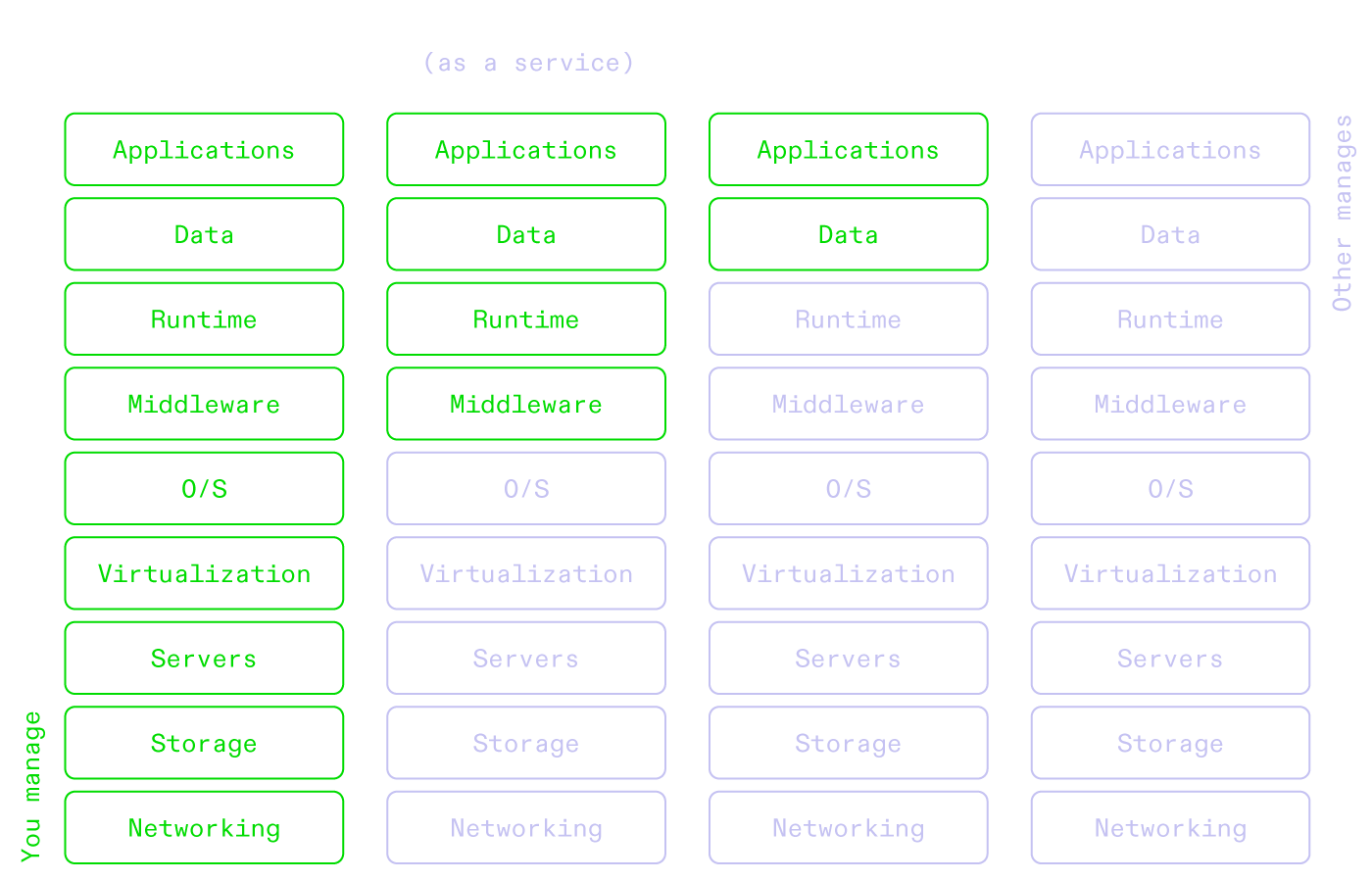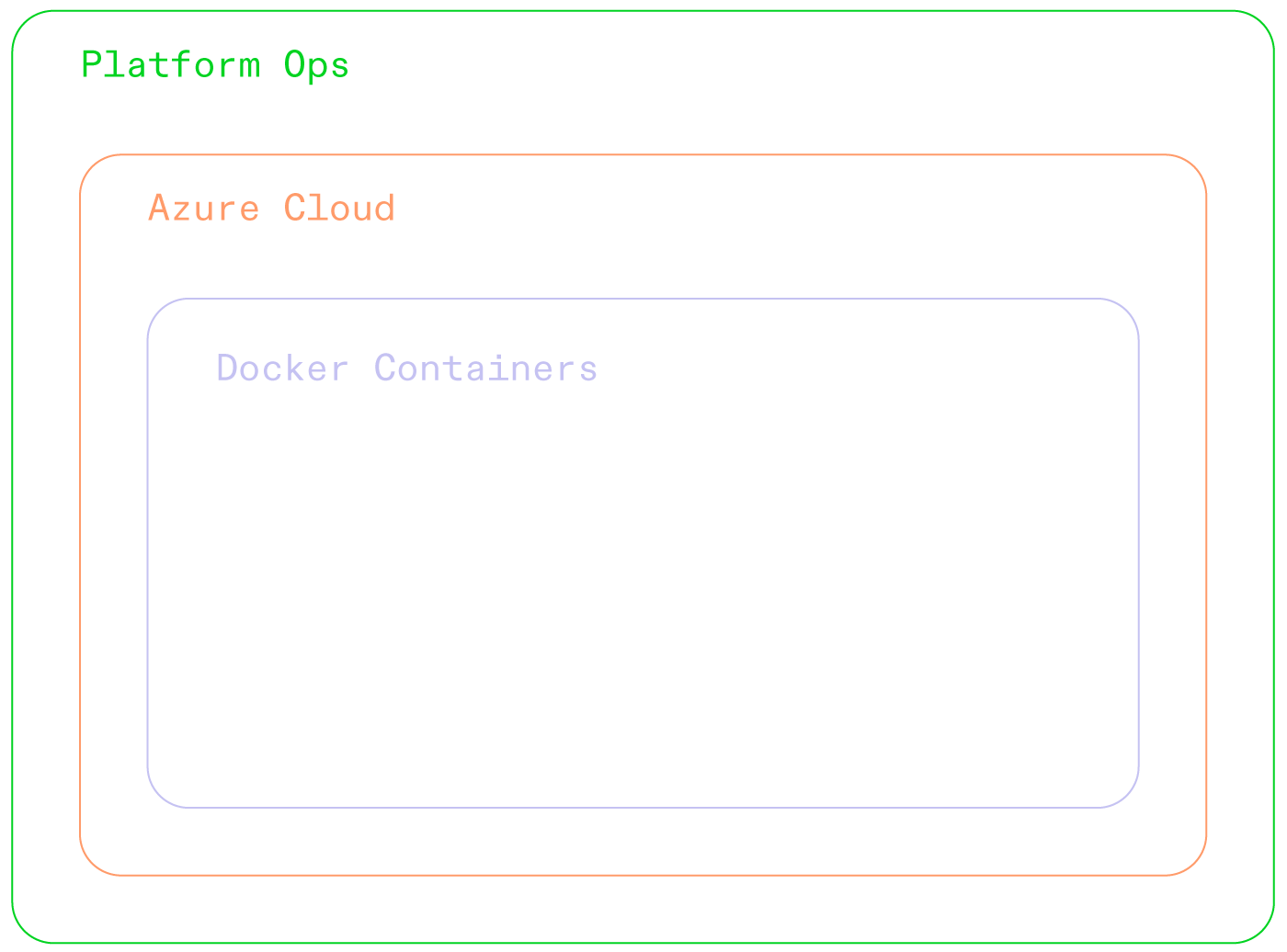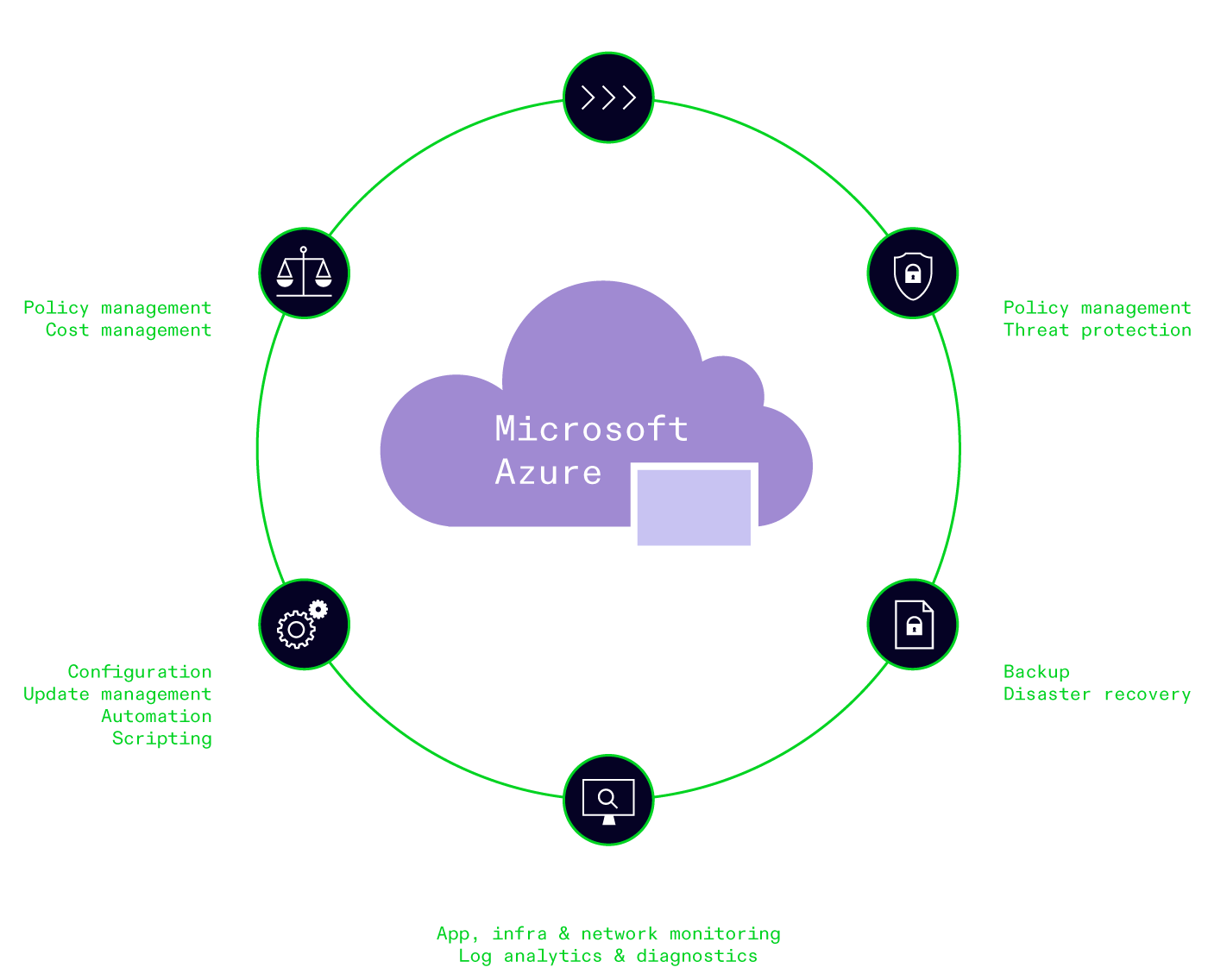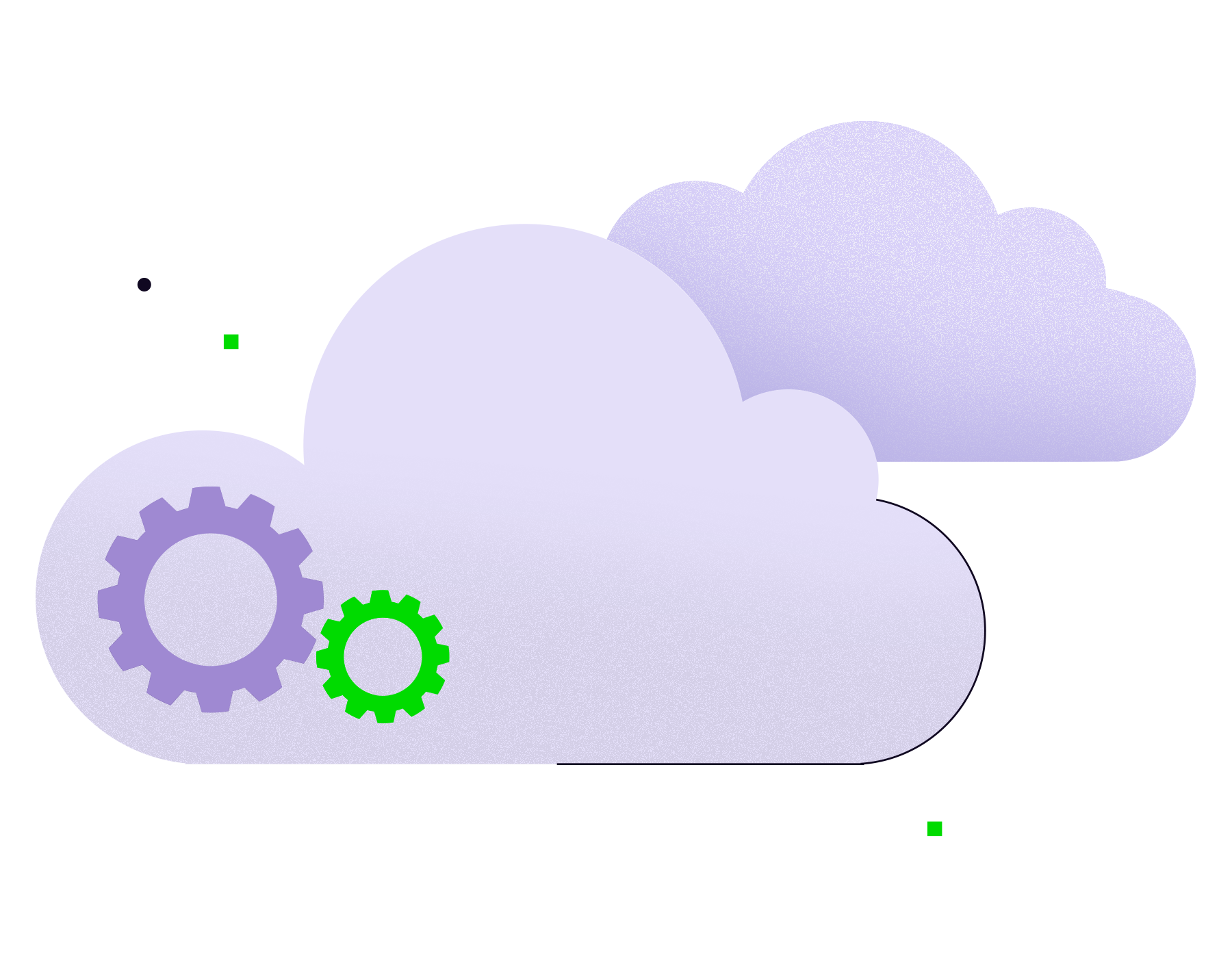CLOUD OPTIONS
It is therefore important to know what the options are in the cloud. Cloud consists of three flavours, Infrastructure as a Service (IaaS), Platform as a Service (PaaS) or Software as a Service (SAAS). The difference between the cloud flavours is the realm of responsibility, as depicted in the following picture:

The following paragraphs explain the different cloud platforms:
SOFTWARE AS A SERVICE (SAAS)
- Access to commercial software on the web
- Centralized software management
- One-to-Many software delivery model
- Managed software upgrades and integration of different software parts with help of APIs
PLATFORM AS A SERVICE (PAAS)
- Develop, test and deploy software and applications
- Multi-tenant design that allows users to deploy the same application in different environments
- Built-in scalability for load balancing and failover
- Web-based tools for the creation, modification and flawless deployment of User Interfaces
- Enables collaboration of development teams with help of communication tools and project planning solutions
- Tools for hassle-free handling of subscription management and billing
INFRASTRUCTURE AS A SERVICE (IAAS)
- Distribution of resources as a service
- Designed for dynamic scaling
- Utility pricing model and variable costs
- Allows multiple users to work on a single set of hardware
MANAGED CLOUD SERVICES
OPTION 1: SAAS
OPTION 2: PLATFORM OPERATIONS
The role of our Platform Ops team is to provide operational services to development teams in a way that allows them to go on to self-serve. Services include monitoring, dashboarding, infrastructure creation, CI/CD pipeline creation, bootstrapping of new projects, security services and testing. In short, any area where there needs to be consistency between development and operations.

Managing azure application resources is part of our OpsNow PlatformOps. This service provides Managed Services for your cloud resources and applications in the cloud. PlatformOps is for customers that use applications and microservices in the Azure cloud. We manage your cloud environment for your applications and interact with the development teams to provide fast deploys and operational excellence in the cloud.
OPTION 3: IAAS OPERATIONS
While IAAS provides you with resources in the cloud, the management of these resources remains your responsibility. Migrations, configurations, governance, security, monitoring and protection remain your responsibility. A good management of your resources in the cloud is as important as your resources in your own datacenter.

Using Azure Lighthouse and our own toolset, OpsNow provides Azure managed services for horizontal migrations to the Azure cloud. We manage and maintain your Azure cloud resources through our own tenant integration and provide all services required for the management of your cloud.
We use an automated approach to management and will automate what is worth to be automated. Examples are the monitoring, automated updates and patches, automated deploys, operational job scheduling … We try as much as possible to go for automated operations and use AIOps as supporting technology to faster find root causes for troubleshooting and use the necessary APIs to automate regular tasks.


